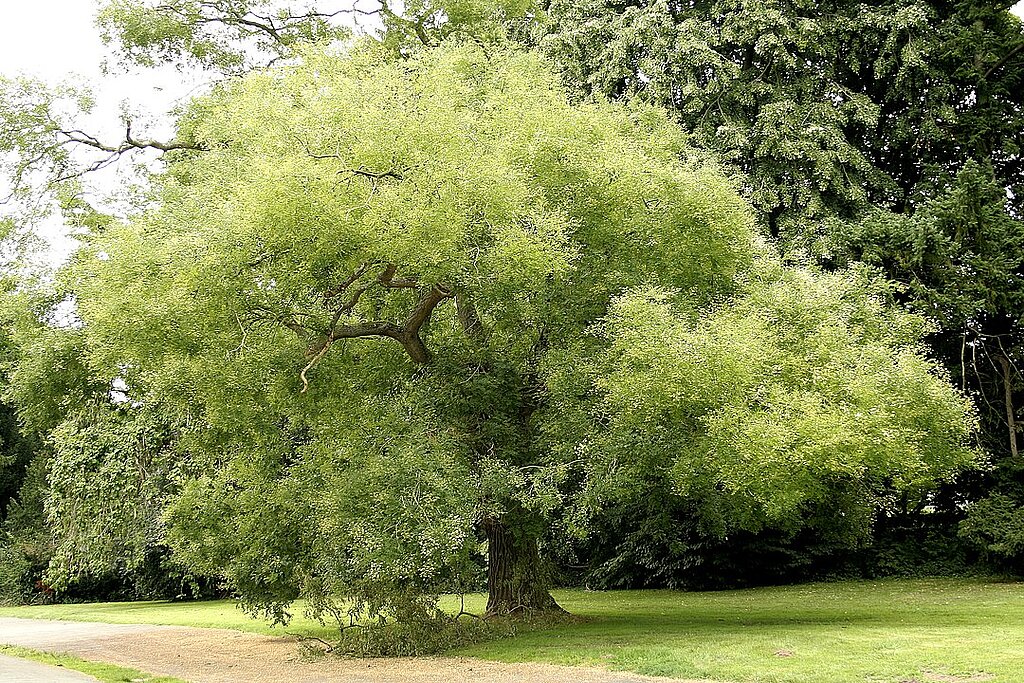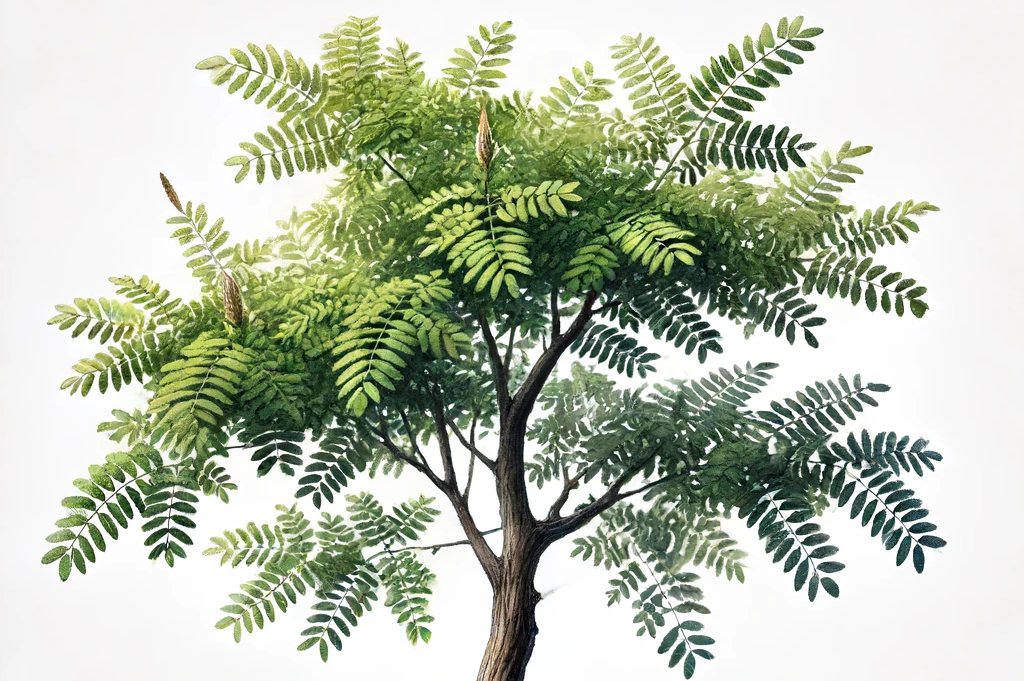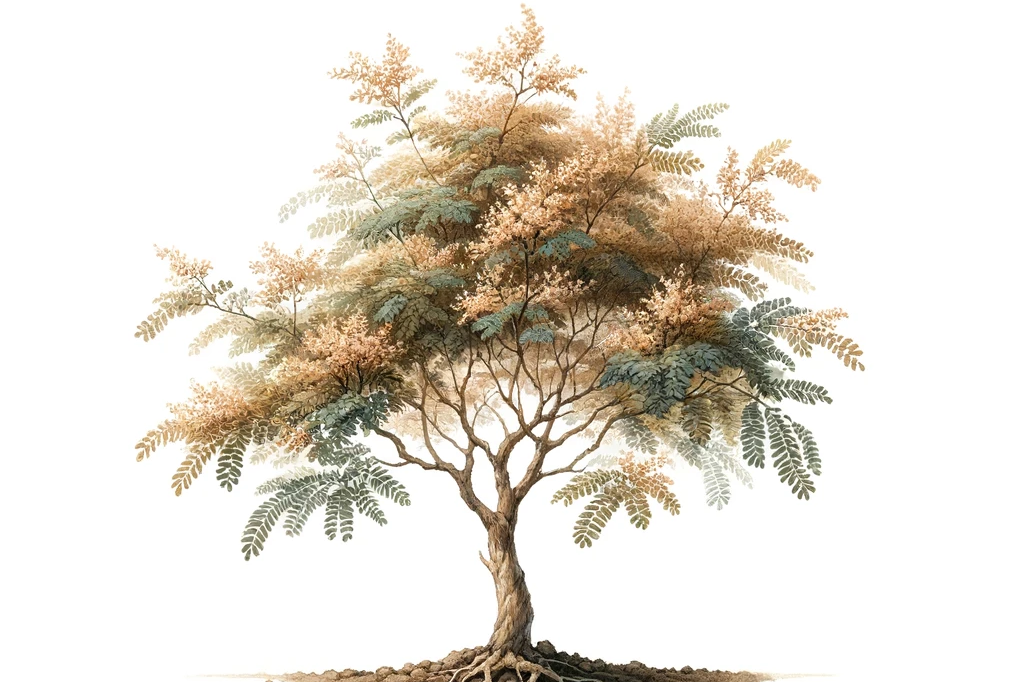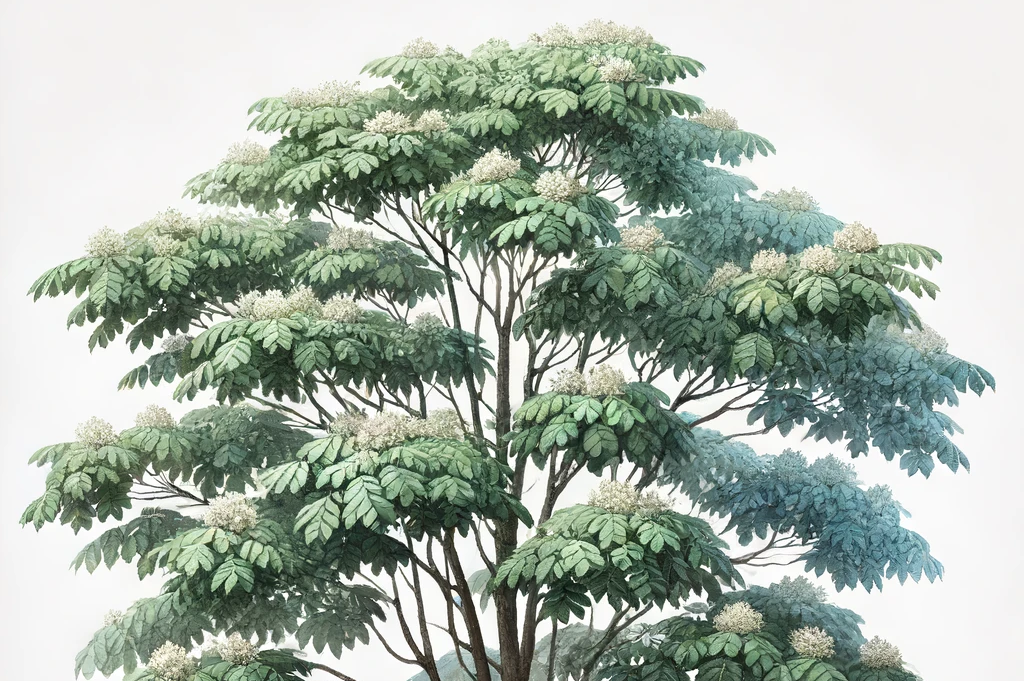American Gleditsia
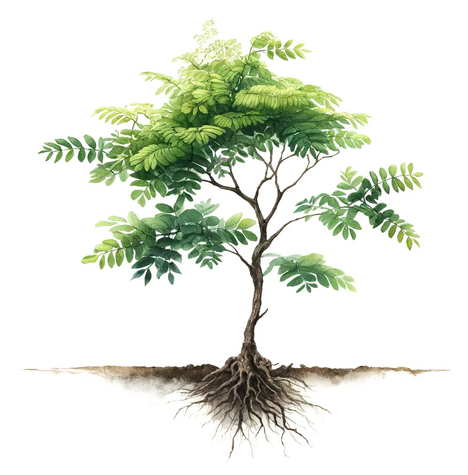
Under the magnifying glass: The components of the American gleditsia
The prickly truth: thorns
The American Gleditsia is known for its long, sharp thorns, which can grow up to 20 cm long. Not only are these thorns a physical hazard that can cause injury to dogs, but they also carry the risk of infection should an injury occur.
Poisonous temptation: the seeds
The seeds of the American Gleditsia, embedded in a seemingly harmless pod, pose the greatest danger to dogs. They contain toxic substances that, if consumed by a dog, can lead to nausea, vomiting, diarrhea and, in severe cases, even neurological disorders.
Deceptive beauty: leaves and bark
While the leaves and bark of American Gleditsia are not as highly toxic as the seeds, they can still cause gastrointestinal distress in sensitive dogs or if consumed in large quantities.
Focusing on Bello's safety: What dog owners need to know
As a responsible dog owner, it's important to know the dangers posed by the American Gleditsia. Avoid letting your dog run free near these trees, especially during seed ripening when the pods fall to the ground. If your dog does come into contact with any part of this tree, watch him carefully for signs of poisoning and if in doubt, seek veterinary help immediately.
Although the American Gleditsia is a beautiful tree, it poses serious risks to our beloved dogs. The mixture of physical dangers from thorns and toxic risks from eating seeds, leaves or bark makes it a tree that dog owners should avoid. Your dog's safety is a top priority. By being proactive and aware of the potential dangers of the American Gleditsia, you can protect your four-legged friend and ensure that your time together remains free from unwanted incidents.
Properties 5
Are you looking for other ingredients with a specific property?
Just click on them to find more.
If you notice any signs of hypersensitivity or poisoning in your dog, you should see your vet immediately. We are not a substitute for a vet, but we try to be as accurate as possible. Every dog reacts differently and we recommend you get a second opinion or consult your vet if in doubt.
Stay healthy and take good care of your four-legged friend!😊
Similar to American Gleditsia
Dogs are curious creatures that often tend to explore their surroundings through smell and taste. This trait means that pet owners must constantly be on guard for potentially dangerous plants that...
The relationship between dogs and nature is as old as time itself. As dog owners, it is our duty to ensure that the environment in which our faithful companions play and explore is safe for them. The...
The acacia tree is characterized by its unique composition. It contains: Phytochemicals: naturally occurring chemicals found in the leaves, bark and seeds of the tree. Some of these compounds can...
The antler tree, with its distinctive foliage and woody structure, can be found in many gardens and parks around the world. Despite its popularity in landscaping, knowledge of its effects on pets,...
